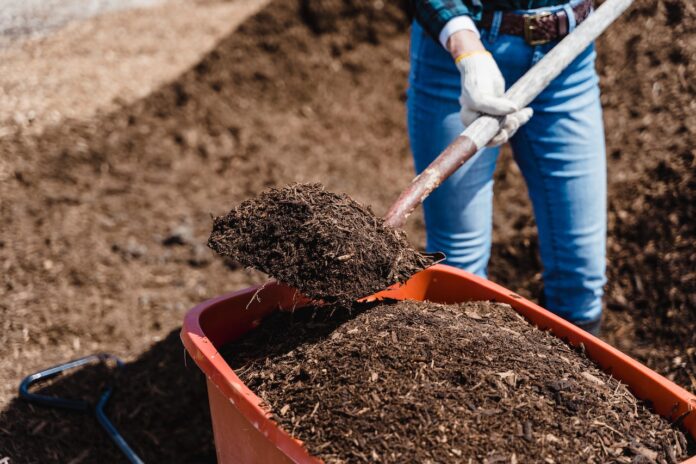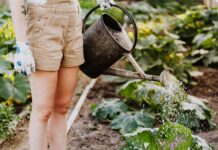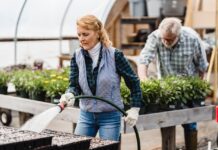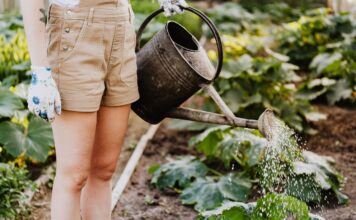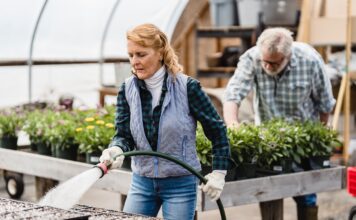In this comprehensive guide to composting, readers will learn about the definition, importance, and various types of composting systems. The article discusses the numerous environmental, agricultural, and economic benefits that come from composting, such as reducing waste, improving soil health, and generating revenue. It also delves into different composting methods, including aerobic, anaerobic, vermicomposting, trench composting, and sheet composting. Readers will also gain insight into the ideal balance of carbon-to-nitrogen ratios in compost, as well as tips and best practices for maintaining and using compost. The guide also covers common composting problems and solutions, along with large-scale composting initiatives such as community programs and commercial facilities.
What is Composting?
Definition and Process
Composting is the natural process of decomposing and recycling organic materials, such as leaves, grass clippings, fruit and vegetable scraps, and other biodegradable waste, into a nutrient-rich substance called compost. The process involves the breakdown of organic materials by microorganisms such as bacteria and fungi, which release enzymes to degrade the complex organic compounds into simple substances that can be easily absorbed by plants.
The composting process typically involves four key stages: (1) the initial phase, where temperature and moisture levels increase as microorganisms break down readily available organic matter; (2) the thermophilic phase, where high temperatures eliminate potential pathogens and weed seeds; (3) the cooling phase, when temperature gradually decreases and slower-acting microorganisms continue degradation; and (4) the maturation phase, where the compost stabilizes and develops its characteristic dark appearance, crumbly texture, and earthy smell.
Importance of Composting
Composting offers numerous environmental, economic, and social benefits. Some of the key advantages include:
1. Waste Reduction: Composting helps reduce the amount of organic waste that goes into landfills or incinerators, reducing the pollution caused by leachate and methane emissions, as well as prolonging the lifespan of landfills.
2. Soil Fertility and Structure: Compost is rich in essential nutrients, such as nitrogen, phosphorus, potassium, and trace elements, which enhances soil fertility and plant growth. Moreover, adding compost to the soil improves its structure, porosity, and water-holding capacity, leading to better resistance against erosion and drought.
3. Biodiversity: Composting supports a diverse population of beneficial microorganisms, earthworms, and insects, which contribute to nutrient cycling, soil structure, and natural pest suppression in the garden or farm ecosystem.
4. Climate Change Mitigation: By composting, you are effectively recycling carbon and other nutrients, preventing them from entering the atmosphere as greenhouse gases. Additionally, the use of compost as a soil amendment increases the soil’s capacity to store carbon.
5. Local Economic Development: Community compost initiatives provide green jobs, offer educational opportunities, and contribute to local waste management.
Types of Composting Systems
There is a wide variety of composting methods and systems, ranging from simple techniques that can be practiced at home to large-scale industrial facilities. Some common types include:
1. Backyard Composting: This is a popular method for homeowners and gardeners, where organic waste materials are placed in an open pile, a bin, or a tumbler. The compost heap is regularly turned to enhance aeration, and moisture levels are maintained to promote decomposition.
2. Vermicomposting: In this method, worms such as red wigglers or European nightcrawlers are used to break down organic waste. Vermicompost is a highly nutritious substance that provides benefits similar to compost but is often finer in texture.
3. Bokashi Fermentation: This is an anaerobic method that involves fermenting organic waste materials with the aid of effective microorganisms (EM) and carbohydrates such as bran or molasses. After fermentation, the pre-digested materials are buried in the soil, where they break down further.
4. Aerated Static Pile Composting: This method involves arranging organic materials into large piles or windrows with a porous base for passive aeration. Sometimes, aeration is facilitated using a blower system.
5. In-Vessel Composting: In this method, organic materials are placed in an enclosed bin, drum, or tunnel equipped with a system for active aeration and turning. This allows for faster and more controlled decomposition while minimizing odor and pest issues.
6. Large-Scale Industrial Composting: These systems are designed for the treatment of organic waste on a municipal or commercial scale. They typically employ variations of windrow, aerated static pile, or in-vessel technologies, along with advanced monitoring and control systems to ensure rapid, efficient, and consistent composting performance.<h2>Benefits of Composting</h2>
Environmental Benefits
One of the primary benefits of composting is the positive impact it has on the environment. By recycling organic waste, composting reduces the need for landfills and contributes to reversing climate change through several significant ways.
Reducing Landfill Waste
Composting enables us to reduce the volume of organic waste sent to landfills. By sending food scraps and yard trimmings to a compost pile instead of a landfill, we can significantly reduce the amount of waste produced by households, businesses, and communities.
Landfills are one of the primary sources of methane emissions, a potent greenhouse gas contributing to climate change. When organic materials such as food and yard waste decompose in landfills, they produce methane due to the anaerobic conditions (lack of oxygen) that promote the activity of methane-producing microorganisms. Composting encourages the aerobic decomposition of organic materials, which does not generate methane.
Lowering Greenhouse Gas Emissions
Composting not only reduces methane emissions from landfills but also contributes to reducing the carbon footprint of waste management activities. The process of collecting, transporting, and disposing of waste generates considerable greenhouse gas emissions. Composting at home or in local facilities can decrease the need for fossil fuel consumption in the transportation of waste to landfills.
Furthermore, composting can help sequester carbon in the soil. Applying compost to soils increases their organic matter content, which can store (or sequester) carbon dioxide from the atmosphere, thereby reducing the overall concentration of greenhouse gases.
Conserving Water and Preventing Erosion
Compost can improve soil structure and water retention capacity, helping to conserve water and prevent erosion. By using compost in gardens, landscapes, and agricultural fields, the need for irrigation can be reduced, conserving precious water resources.
The improved soil structure that results from using compost also decreases the risk of soil erosion, which in turn can reduce sedimentation in waterways and protect aquatic habitats.
Agricultural Benefits
Composting offers numerous benefits to agriculture, from improving soil health to promoting pest resistance and plant growth.
Improving Soil Health
One of the most significant advantages of compost is its ability to improve soil health. Compost adds nutrients, organic matter, and beneficial microorganisms to the soil, improving its physical, chemical, and biological properties. This results in more fertile and productive soil, better suited for growing crops or other plants.
Supporting Soil Microorganisms and Earthworms
Compost contains a diverse array of microorganisms that help break down organic matter into nutrients that plants can use. These microorganisms also improve soil fertility by releasing substances that can stimulate plant growth, such as plant hormones and enzymes.
Moreover, compost can support the populations of earthworms and other beneficial invertebrates in the soil. These creatures help maintain soil health by breaking down organic matter and promoting the formation of stable soil aggregates.
Promoting Plant Growth and Pest Resistance
In addition to providing essential nutrients, compost can also promote plant growth and protect against pests and diseases. The increased availability of nutrients in compost-amended soil can result in stronger and more robust plants that are better able to resist pests and diseases.
Some of the beneficial microorganisms in compost may also help suppress plant pathogens and reduce the reliance on chemical pesticides, which can have negative environmental impacts.
Economic Benefits
Composting can offer numerous economic advantages at various scales, from individual households to entire communities.
Lowering Fertilizer and Chemical Costs
By utilizing compost to supply nutrients and improve soil health, growers can reduce their dependency on synthetic fertilizers and pesticides. This can considerably lower the costs associated with crop production and lead to more sustainable and cost-effective agricultural practices.
Creating Employment Opportunities
The composting industry can help create jobs in waste management, compost production, and sales. These jobs contribute to the local economy and provide new opportunities for individuals interested in working in environmentally-friendly sectors.
Generating Revenue through Compost Sales
In addition to job creation, composting can generate revenue through the sale of high-quality compost. This compost can be used as a valuable soil amendment for gardens, landscapes, and agricultural fields, providing an additional income source for compost producers.
In summary, composting offers numerous benefits for both the environment and the economy. By recycling organic waste, reducing landfill contributions, conserving water, and supporting sustainable agriculture, composting can play an essential role in creating a greener, more sustainable world.
Composting Methods
Composting is the process of breaking down organic matter, such as food scraps and yard waste, into nutrient-rich humus that can be used to enrich soil, promote plant growth and reduce the need for chemical fertilizers. There are several composting methods available, each with their own advantages and disadvantages. In this article, we will explore some of the most popular composting methods and provide you with information to help you decide which method is best suited for your needs.
Aerobic Composting
Aerobic composting is a process that requires the presence of oxygen to break down organic waste. This method involves regularly turning the compost pile to ensure sufficient airflow, which promotes the growth of aerobic microorganisms responsible for breaking down the waste material.
Hot Composting
Hot composting is a high-temperature, aerobic process that can take from one to three months to produce finished compost. This method is best suited for individuals or organizations with large quantities of waste and the desire to produce compost quickly. Hot composting involves maintaining a balance of carbon and nitrogen-rich materials, keeping pile moisture levels consistent, and proper pile management to maintain temperatures between 130-160°F (55-70°C). Hot composting is efficient at breaking down pathogens and weed seeds, resulting in a safe, high-quality compost.
Cold Composting
Cold composting is a slower, low-temperature aerobic process that can take six to twelve months or more to produce finished compost. This method is less labor-intensive compared to hot composting and is suitable for individuals or organizations with smaller quantities of waste or limited time for pile management. Cold composting involves adding organic waste materials over time and occasionally turning the pile to ensure aeration. The lower temperatures of cold composting mean that the process may not effectively break down pathogens, weed seeds, or degrade chemicals.
Anaerobic Composting
Anaerobic composting is a process that does not require oxygen, making it ideal for areas where managing a compost pile is not feasible or convenient. This method relies on specific microorganisms that can break down organic waste in oxygen-starved environments. Anaerobic composting tends to be slower and may produce odors, but it can be a useful alternative for some situations.
Bokashi
Bokashi composting is an anaerobic process that uses inoculated bran, rich in beneficial microorganisms, to ferment kitchen waste in a sealed container. This method is fast, taking only two to four weeks, and can break down a variety of organic waste, including meat, dairy, and cooked foods that are not suitable for other composting methods due to their ability to attract pests. Once the waste has fermented, it can be buried in the garden or added to a traditional compost pile to complete the decomposition process.
Composting with Black Soldier Fly Larvae
Composting with black soldier fly larvae (BSFL) is another anaerobic method that involves using the larvae to decompose organic waste. This approach is gaining popularity due to the larvae’s remarkable ability to break down food waste quickly, converting it into valuable insect protein for use as animal feed. BSFL composting requires managing a colony of black soldier flies and can be more complex than other methods but offers unique advantages, such as reducing waste volume, producing high-quality compost, and creating a protein-rich animal feed.
Vermicomposting
Vermicomposting is the utilization of worms, specifically composting worms, to break down organic waste into nutrient-rich vermicompost. This method is suitable for individuals and organizations with limited space, as it can be done both indoors and outdoors.
Types of Worms for Vermicomposting
The most common worms used for vermicomposting are red wigglers (Eisenia fetida) and European nightcrawlers (Eisenia hortensis). These species are well-adapted to the environment found in worm bins or beds and can consume large amounts of organic waste relative to their size. Other worm species, such as common earthworms, are not suitable for vermicomposting and should not be introduced to worm bins or used for this purpose.
Worm Bin Construction and Management
Worm bins can be constructed from wood, plastic, or metal and should provide proper drainage, ventilation, and protection from pests. The optimal temperature range for worm bin composting is between 55-77°F (13-25°C), and moisture levels should remain between 70-90%. Worm bins should be filled with bedding materials such as shredded newspaper, cardboard, or coconut coir, and organic waste can be added regularly to feed the worms. Managing a worm bin involves maintaining optimal temperature and moisture levels, monitoring worm populations, and periodically harvesting the finished vermicompost.
Trench Composting
Trench composting is a simple method that involves digging a trench or hole in the garden and burying organic waste directly in the soil. The waste decomposes over time, providing nutrients to the surrounding plants. This method is ideal for individuals with limited time, space, or resources to dedicate to a traditional compost pile. Trench composting can take several months to produce finished compost, depending on the size of the trench and the types of waste being buried.
Sheet Composting or Lasagna Gardening
Sheet composting, also known as lasagna gardening, is a no-dig method that involves creating layers of organic materials, such as leaves, grass clippings, and kitchen waste, on the surface of the garden. Over time, these layers will break down and create a nutrient-rich, well-draining layer of compost that can support plant growth. This method is well-suited for individuals looking to create new garden beds or improve the soil quality in existing beds without the need for tilling or digging. Depending on the materials used and the rate at which they decompose, sheet composting can take several months to a year to produce finished compost.
Compost Ingredients and Ratios
Composting is an important process for recycling organic waste into nutrient-rich soil amendments that can greatly enhance plant growth. A well-balanced compost pile contains a mixture of both green (nitrogen-rich) and brown (carbon-rich) materials, in the right ratios. Properly combining these ingredients can lead to faster decomposition and a more homogeneous and nutrient-rich product.
Understanding Carbon-to-Nitrogen Ratios
The carbon-to-nitrogen (C:N) ratio is a key factor in determining the quality of a compost pile. A C:N ratio between 25:1 and 30:1 is considered optimal for efficient and quick decomposition of organic materials by microbes. This balance ensures that microbes have enough carbon for energy while still being able to break down nitrogen-rich materials.
When there is too much carbon (brown material), decomposition occurs at a slower rate, leading to a longer composting process. Conversely, when there is too much nitrogen (green material), the composting process can become smelly due to ammonia release. Maintaining a proper balance of these two factors will ensure a healthy, effective compost pile.
Green Materials (Nitrogen-Rich)
Green materials are high in nitrogen content, and they are essential for fueling the growth of microorganisms in the compost pile. These materials tend to be moist and fresh, breaking down quickly and providing nitrogen for the decomposition process. A few examples of green materials include:
- Grass clippings: Grass clippings are abundant, especially during the growing season, and they provide an excellent source of nitrogen. However, if not mixed with other materials, they can mat together and exclude oxygen, slowing down the decomposition process.
- Fruit and vegetable scraps: Kitchen waste is a great nitrogen-rich source for composting. It should be buried within the compost pile to prevent pests from being attracted to your pile.
- Coffee grounds and tea bags: Both coffee grounds and tea bags are rich in nitrogen and contribute to the overall nutrient profile of the compost.
- Manure: Animal manures, such as chicken, cow, and horse, can be added to the compost as a nitrogen source.
- Green leaves: Rich in nitrogen, green leaves can kickstart the decomposition process when added to the compost pile.
Brown Materials (Carbon-Rich)
Brown materials are high in carbon content and are critical for providing the energy source that microorganisms need to break down organic matter. Brown materials tend to be dry, providing an important balance to the moisture content and preventing the compost pile from becoming too wet. Examples of brown materials include:
- Dry leaves: Dry leaves are an abundant source of carbon, especially during the fall season. They can be shredded to speed up decomposition.
- Straw: Straw is an excellent carbon source and provides good aeration for the compost pile.
- Wood chips: Wood chips are a long-lasting carbon source that can help maintain the structure of the compost pile while decomposing slowly.
- Cardboard and paper: Non-glossy paper and cardboard can be torn or shredded and added to the compost pile. They provide an excellent carbon source while helping to balance out the moisture content of the pile.
- Sawdust: Sawdust is another high carbon material that, when added in small quantities, can provide a valuable energy source to microbes, helping to degrade other materials more efficiently.
Materials to Avoid
While many organic materials can be composted, certain items should be kept out of your compost pile to prevent possible contamination, pests or an imbalanced C:N ratio. Some materials to avoid include:
- Diseased plants: Plant material infected with diseases has the potential to contaminate the compost, spreading illness to other plants if used in the garden.
- Perennial weeds: Some weeds, such as dandelions and bindweed, can regenerate from small root fragments and end up growing back in your garden.
- Meat, fish, and dairy products: These materials can attract pests and cause unpleasant odors during decomposition.
- Pesticide-treated materials: Plant materials that have been treated with pesticides or other chemicals may contaminate the compost pile and harm beneficial microbes.
- Pet waste: Dog and cat feces can contain harmful pathogens that may not be killed during the composting process and can pose a health risk.
Composting Techniques and Best Practices
Composting is a natural process that turns organic matter into a rich, nutrient-dense fertilizer for plants. When done properly, composting is an environmentally friendly way to recycle kitchen and yard waste into valuable organic material that can be used in gardens and landscapes. Here, we’ll discuss some effective composting techniques and best practices, including layering materials, maintaining proper moisture and aeration, turning and mixing the compost, monitoring temperature, knowing when compost is ready, and using the compost in the garden or landscape.
Layering Materials
A key component of successful composting is layering materials. The basic idea is to create a balanced mix of carbon-rich “brown” materials (e.g., dry leaves, straw, and sawdust) and nitrogen-rich “green” materials (e.g., grass clippings, vegetable scraps, and coffee grounds) in alternating layers.
Start by creating a base layer of coarse materials, such as small branches or straw, to improve air circulation at the bottom of the compost heap or bin. Next, add a layer of brown materials, followed by a layer of green materials. Continue alternating layers of brown and green materials until your compost pile is at least 3 feet tall. Be sure to keep a 2:1 ratio of brown to green materials by volume, which ensures a healthy balance of carbon and nitrogen for the composting process. This layering technique can provide the necessary structure and diversity of materials for effective decomposition.
Maintaining Proper Moisture and Aeration
Moisture and aeration are essential for the decomposition process in any compost pile. The right balance of air and water will encourage the growth of aerobic bacteria that break down the organic materials in your compost.
To maintain proper moisture, make sure the compost is kept damp but not saturated. It should be about as moist as a wrung-out sponge. If the pile is too dry, add water to the appropriate layers. If it’s too wet, turn the pile and add more brown materials to help absorb excess moisture.
Achieving proper aeration involves ensuring that oxygen can reach the decomposing materials. To do this, regularly turn and mix the compost using a pitchfork or shovel. This helps prevent the materials from becoming compacted and provides much-needed oxygen to the bacteria breaking down the organic matter.
Turning and Mixing the Compost
Turning and mixing the compost pile is an essential step in managing the decomposition process. It helps introduce oxygen, which promotes the growth of aerobic bacteria responsible for breaking down organic materials. It also helps redistribute heat, which is generated as a byproduct of the decomposition process.
Ideally, you should turn and mix the compost pile every week or two. The more frequently you turn it, the faster the materials will decompose. When turning the compost, move materials from the center to the outer edges and vice versa. This ensures that all materials are thoroughly decomposed and prevents the pile from becoming overly compacted.
Monitoring Temperature
Temperature plays a crucial role in the composting process. As bacteria break down organic materials, heat is generated as a byproduct. Monitoring the temperature of your compost pile can help you maintain the ideal conditions for decomposition and ensure the process is working effectively.
The optimal temperature for compost piles is 130-160°F (54-71°C). This is the range at which most thermophilic bacteria, which break down complex organic materials, thrive. You can use a compost thermometer to take the temperature at different depths of the pile.
If the temperature is too low, it may indicate that the pile is not breaking down properly. Turning the compost more frequently and adding more green materials can help raise the temperature. If the temperature is too high, it can kill off beneficial bacteria. In this case, turning the compost to introduce air can help bring the temperature back down.
Knowing When Compost is Ready
Compost is typically considered mature and ready for use when it is dark, crumbly, and has an earthy smell. It may take a few months to a year for your compost to be ready, depending on the materials and conditions.
To determine if your compost is fully mature, perform a “bag test.” Place a small amount of compost in a sealed plastic bag and keep it at room temperature for a few days. If the bag smells pleasant, the compost is ready; if it still has an unpleasant odor, the compost needs more time to mature.
Using Compost in the Garden or Landscape
When your compost is mature, it’s time to put it to good use! Compost can be used as a soil amendment in gardens and landscapes, providing nutrients and improving soil structure. Spread a 2-4 inch layer of compost on top of your garden soil and gently incorporate it into the top 6 inches. You can also use compost as a mulch around plants, which helps conserve moisture and suppress weeds, or mix it into potting soil for container gardens.
Remember, compost is not a substitute for regular fertilizer; it is considered a soil conditioner that provides a range of nutrients and enhances plant growth. Regular fertilization may still be necessary, depending on your soil composition and the specific needs of your plants.
Common Composting Problems and Solutions
Composting is an environmentally friendly way to recycle organic waste and create nutrient-rich fertilizer for your plants and garden. However, the process can sometimes face a few challenges. In this article, we will discuss five common composting problems and their solutions: odor issues, pests and rodents, slow decomposition process, mold growth, and overheating or fire risk.
Odor Issues
One of the main concerns with composting is the unpleasant smell that can sometimes emanate from the compost pile. This issue usually occurs when there is insufficient oxygen or an imbalance in the ratio of “green” (nitrogen-rich) and “brown” (carbon-rich) materials. To combat this problem, try the following solutions:
- Regularly turn your compost pile to increase oxygen flow. This can be done by using a garden fork, compost aerator tool, or even by just giving the bin a good shake to allow air circulation.
- Maintain the right balance of green and brown materials. A good rule of thumb is to maintain a 1:3 ratio of green to brown ingredients. Make sure to chop or shred the larger items so they break down faster.
- Avoid adding materials that can cause odors, such as meat, dairy products, and oily foods. Stick to fruit and vegetable scraps, eggshells, coffee grounds, and yard waste like grass clippings and leaves.
- Add a layer of brown materials on top of your compost pile to help neutralize any odors. This can be leaves, straw, or even shredded newspapers.
- If the odor issue persists, consider using a compost bin with a lid or a tumbler to help contain the smell.
Pests and Rodents
Unwanted visitors like insects, rodents, and other animals can be attracted to your compost pile. To prevent these pests from setting up camp, here are some tips:
- Avoid adding food scraps that can attract pests, such as meat, dairy products, and oily foods.
- Keep a layer of brown materials on top of your compost pile to act as a barrier against pests.
- Use a pest-resistant compost bin that is fully enclosed to keep unwanted creatures out.
- Keep the compost area clean and tidy. Remove any food scraps that may have fallen outside the bin and make sure the surrounding area is free from debris that could provide shelter for pests.
- For rodent prevention, consider using a wire mesh or hardware cloth at the bottom of your compost bin or pile to prevent access.
Slow Decomposition Process
If your compost pile is taking longer than expected to break down, there are several possible causes:
- Insufficient oxygen: Frequent turning of the compost pile can help maintain proper aeration, and ensuring that your compost bin has ample ventilation can also assist.
- Large or tough materials: Chopping or shredding materials before adding them to the compost pile can accelerate the decomposition process.
- Imbalanced ratio of green and brown materials: Ensure you have the proper proportion of nitrogen-rich and carbon-rich materials in your compost pile, as outlined earlier in the article.
- Lack of moisture: A damp (but not soggy) pile can speed up the decomposition process. Make sure that you’re adding enough water, and consider using a compost cover during wet weather to prevent oversaturation.
Mold Growth
Mold and fungi are common in compost piles, as they are part of the natural decomposition process. However, if you notice excessive mold, it could indicate some issues:
- High moisture content: Ensure that the compost pile is kept damp, but not overly wet.
- Lack of air circulation: Regularly turning your compost pile and having good ventilation in your compost bin can help to keep mold growth in check.
- Excess food scraps: Reducing the number of food scraps in your compost and focusing more on yard waste can help to prevent mold issues.
Overheating or Fire Risk
A compost pile that is working efficiently can generate heat as part of the decomposition process. However, extremely high temperatures can pose a fire risk.
- Regularly turn your compost pile to evenly distribute the heat and maintain aeration.
- Avoid placing your compost pile or bin near flammable materials or structures.
- Keep the compost pile damp to help prevent overheating.
By addressing these five common composting problems, you can successfully and safely maintain a compost pile, keeping your garden healthy and the environment happy.
Community and Large-Scale Composting
Community and large-scale composting programs are essential for managing organic waste and promoting sustainability practices. These systems transform waste materials into valuable, nutrient-rich soil amendments or fertilizers that can enhance soil health, plant growth, and agricultural yield. This article will discuss various aspects of community and large-scale composting, including community composting programs, commercial composting facilities, farm-based composting, municipal curbside collection programs, and regulatory considerations.
Community Composting Programs
Community composting programs are a vital part of neighborhood waste management and sustainability initiatives. These programs provide an opportunity for residents to collect food scraps, yard waste, and other compostable materials at a centralized location. The composting process can occur on a communal scale, with individuals contributing to and benefiting from the final compost product. This type of grassroots approach to waste management can foster a strong sense of community, encourage environmental awareness, and develop a circular economy based on the principle of reusing resources.
Successful community composting programs often require collaboration among residents, local government agencies, non-profit organizations, and businesses. Such partnerships can help establish an accessible waste collection site, provide guidance and education on composting best practices, and ensure regular maintenance and monitoring of the composting process.
Commercial Composting Facilities
Commercial composting facilities are larger operations designed to handle vast quantities of organic waste materials generated by various sources, such as restaurants, food processing plants, grocery stores, and landscaping companies. These facilities typically use windrow composting, aerated static pile composting, or in-vessel composting methods to process the waste effectively and efficiently.
Commercial composting facilities play a vital role in diverting waste from landfills, reducing greenhouse gas emissions, and producing high-quality compost for resale to farmers, landscapers, or consumers. The success of such facilities depends on a robust collection and transportation system, as well as informed public policies and regulations. Many municipalities and businesses have found that partnering with commercial composting facilities can significantly reduce waste management costs and contribute to environmental sustainability.
Farm-Based Composting
Farm-based composting offers agricultural operations the opportunity to integrate on-site waste management and soil fertility enhancement. By composting crop residues, animal manure, and other organic materials, farmers can improve soil health, reduce the need for synthetic fertilizers, and manage excess nutrients effectively.
There are various farm-based composting methods, such as windrow, static pile, or in-vessel composting. The choice of method depends on factors like farm size, type of waste materials, labor and equipment availability, and desired compost quality. Successful farm-based composting also requires adherence to best management practices, such as proper site selection, moisture and temperature control, and turning frequency.
Municipal Curbside Collection Programs
Municipal curbside collection programs facilitate the collection and composting of organic waste materials generated by households and businesses. These programs typically involve providing residents with separate bins for food scraps and yard waste, which are collected regularly along with trash and recycling.
Curbside collection programs have proven effective in reducing the amount of organic waste sent to landfills and promoting sustainable waste management practices among the population. To ensure program success, municipalities should invest in public education and outreach, implement efficient collection and transportation systems, and collaborate with composting facilities to process the collected materials.
Regulatory Considerations
The implementation and operation of community and large-scale composting systems must comply with various federal, state, and local regulations. These regulations are intended to protect public health and the environment by ensuring that the composting process is safe, effective, and does not contribute to air, water, or soil pollution.
Regulatory considerations for composting systems may include permitting requirements, site location and design guidelines, waste feedstock restrictions, emissions and odor control, facility inspections, and recordkeeping and reporting protocols. Operators should consult with relevant agencies and experts to ensure compliance with all applicable regulations and industry best practices.
In conclusion, community and large-scale composting is essential for sustainable waste management, promoting resource reuse, and mitigating the environmental impacts of organic waste disposal. By implementing effective programs, processes, and regulations, society can benefit from the multiple advantages these composting systems provide.
1. How does composting help the environment?
Composting helps the environment by recycling organic waste and reducing landfill waste. It creates a nutrient-rich soil amendment that promotes healthy plant growth, conserves water, and decreases the use of chemical fertilizers, which ultimately reduces greenhouse gas emissions (EPA, 2020).
2. What are some suitable materials for a compost pile?
A compost pile should have a mix of ‘green’ and ‘brown’ materials; examples of suitable materials include leaves, grass clippings, fruit scraps, vegetable peels, coffee grounds, eggshells, and even shredded paper products. Avoid adding meat, bones, and dairy products, as these can attract pests (Rodale Institute, n.d.).
3. How can I make my composting process faster?
To speed up composting, ensure the compost pile maintains adequate air circulation and regular moisture levels. Additionally, turning the pile frequently, adding smaller material pieces, and maintaining a proper carbon-to-nitrogen ratio can help accelerate decomposition (NCSU Extension, 1998).
4. What is the optimal size for a composting pile?
An ideal compost pile size is approximately 1 cubic yard (3 feet x 3 feet x 3 feet) to maintain sufficient moisture and heat levels required for efficient decomposition. Smaller piles may not generate significant heat, while larger piles could hamper proper air circulation (Washington State University Extension, 2018).
5. How long does it take for compost to be ready for use?
The time it takes for compost to become ready for use can vary from 3 months to over a year, depending on factors such as the material composition, aeration, and moisture. The finished compost will have a dark, crumbly texture and a pleasant earthy smell (Cornell Cooperative Extension, 1996).
6. Is compost tea beneficial for plants?
Compost tea is a liquid extract made from steeping compost in water, which contains beneficial microorganisms and nutrients. While studies show varying results, compost tea can be helpful in promoting plant growth, suppressing diseases, and enhancing soil fertility (Alaska Master Gardener Anchorage, 2012).

